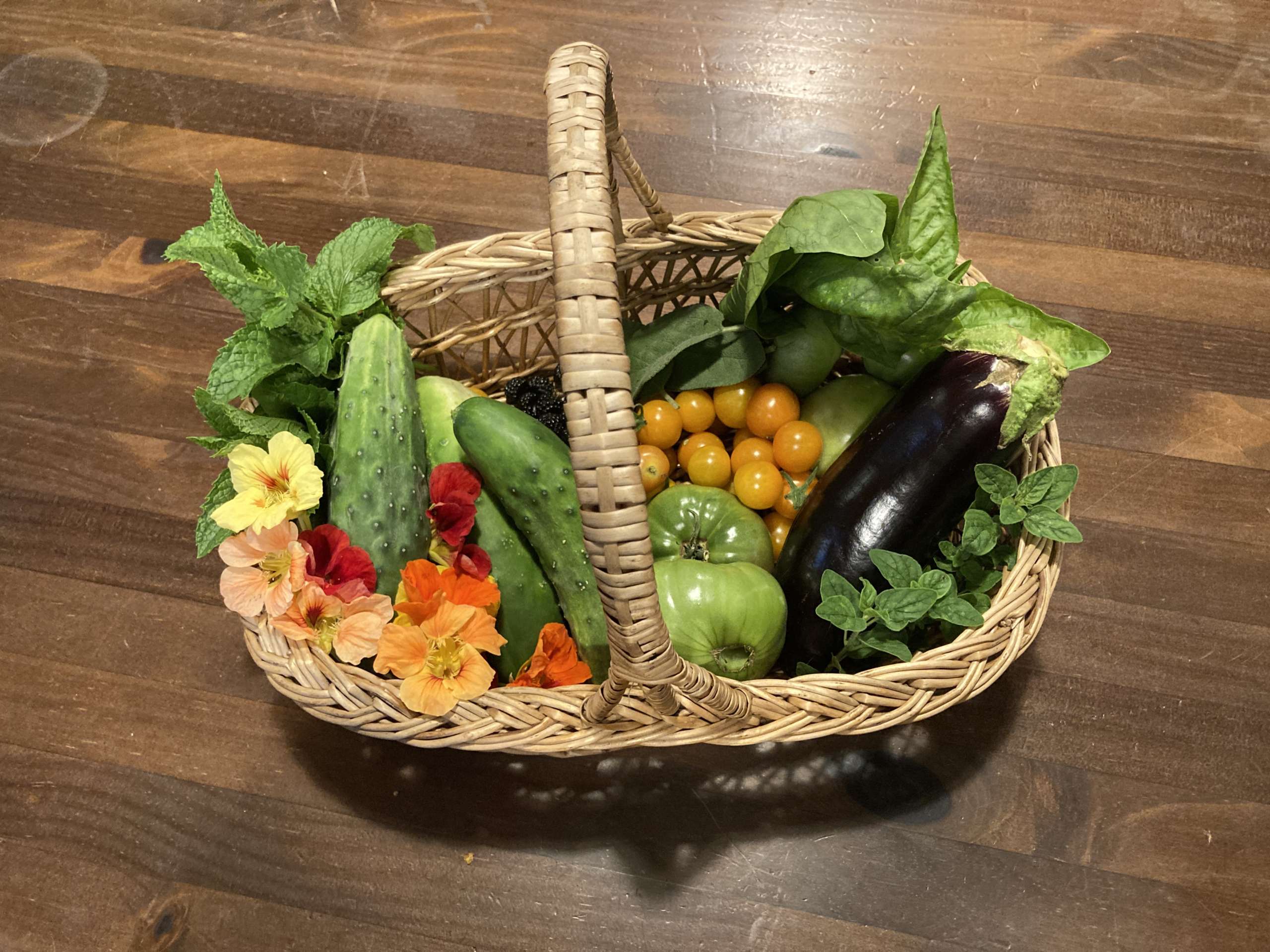Nightshades are part of the Solanaceae Family. They’re a staple in any garden. They are a warm weather crop and should not be planted in the ground until after your last frost, or so they say. Sometimes I plant them sooner and protect them on chilly nights and they do just fine.
Though the plants in this family are annuals, I find that my tomatoes reseed and I end up with many volunteers every year. Last year, my volunteers actually did better than my intentional crop that was overwhelmed by blight.
We really go crazy on the tomatoes over here. My boyfriend is part Italian and really likes those homemade sauces. We dehydrate and freeze a lot. I’m still too paranoid for canning.
We also plant lots of peppers, sweet and hot, as well as a few varieties of eggplants every year.
Nightshades are a great source of fiber. They are rich in vitamins such as A, C, E, K, and B. They have antioxidants such as carotenoids, as well as anti-inflammatory phyto-nutrients. The fruits in this family are also a good source of magnesium, potassium, and folate.
I’ll go into more detail below, but here’s a little infographic if you’re ready to stop reading now.

Pests and Disease
As mentioned earlier, we grow a lot of different varieties of nightshades. Though I have battled a few pests and diseases in this department, nothing holds a candle to my war with the squash bugs. That’s a post in itself – this is about the nightshades.
I’ll start with the easy stuff.

Aphids: Aphids can show up quick, and be quite alarming at first, however I have found that a blast with the hose, or at worst a bit of dish soap can really keep them under control. Keep in mind with any pest (except the squash bug) leaving a few will just help attract their natural predator. I noticed the year after my first battle with aphids I had a lot more ladybugs.
Flea Beetles: Flea Beetles are ones that typically show up on my eggplants. Again, hit them with the hose. If they get too out of control I like to give them a dust with DE (diatomaceous earth, or as we like to call it diatomaceous earthlings). However, please keep in mind even natural approaches to pests in the garden can be harmful to bees and other pollinators. Weigh the pros and cons and never apply products like this when your pollinators are around doing their job. Evenings are usually a pretty good time. Also, please wear protective gear (or hold your breath for a really long time) while applying DE. It can really do some damage to the lungs of humans and animals.
Tomato hornworm: Ew! pick them off and feed them to the chickens, but in moderation. Luckily I’ve never had too many of these. Just the occasional and feeding them to the chickens seems to do the trick. You can plant tiny flowers close by, like alyssum to attract parasitic wasps & turn your garden into a Sci-Fi thriller. More on that in another post, but the movie The Happening comes to mind.

Blossom End Rot: Ok, this one I had one year, but I really think it was due to too much rain. When it rains too much sometimes your plants have a hard time getting the nutrients they need, in this case it is calcium. I added eggshells and lime, but honestly I just had to hope things dried up, pluck off the yuckies so the plant could put it’s energy elsewhere, and keep going.
Blight: UGH! freaking Bliiighttt. I gotta be honest, this one gets to me sometime. Prevention is key but when that doesn’t work, fight it till the bitter end. No one really wins here, and on the other hand, we all do. Even when the blight starts creeping in I still get plenty of tomatoes. The plants just get so depressing to look at that I end up ripping them out. I’m giving my blight bed a break from tomatoes this year. Crop rotation is a good idea for a reason, this is one of them.
I do typically get blight on my tomatoes. Adding some sulfur to the soil can be helpful with prevention. Mulching around the plant with straw is also a good idea. Mulching keeps the soil from splashing up on the lower leaves.
Once the blight actually starts to hit, I go around with my scissors (dipping them in bleach water between every cut) and cut off the diseased portion. This stuff goes in the trash, not the compost! I’ve also tried Epsom salts too, but I didn’t really notice a difference.
Companion Planting
When it comes to companion planting, the plants in this family really seem to enjoy each other’s company. In the past I have planted my peppers and eggplants together along with okra and they have really thrived. Last year I planted my peppers with the asparagus because they don’t really get in the way of each other. I’m trying it out again this year with some added petunias. They aid in repelling tomato hornworms, asparagus beetles, as well as aphids.
I mentioned the alyssum earlier for attracting those beneficial parasitic wasps, but many other tiny flowers will do the same so don’t be afraid to let your dill and parsley bloom.
Enjoying the Harvest
A lot of our favorite summer harvest season meals revolve around nightshades. Cherry tomatoes like Sungold and Lemondrop are like candy off the vine. They go well in salads, too – if they make it inside! In a typical years harvest we have plenty to dehydrate and freeze.
Big heirloom slicers like Black Krim and Brandywine are great with salt and mayo in tomato sandwiches, a simple summer delicacy. When our tomato harvest is booming Eric keeps us fed by making fresh marinara sauces for simple pasta meals. I think the dish we look forward to the most is Ratatouille. When the tomatoes, peppers, eggplants, onions, and zucchinis all come from our own garden it feels like we are really winning at life!
I’d love to hear about your gardening wins and challenges with the nightshade family! Any hot tips and tricks you’d like to share?







